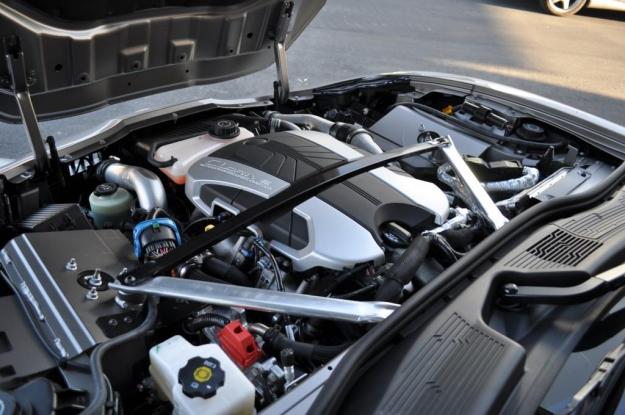
[Editor’s note: The headline of this story was changed on May 14 to reflect that Jon Bereisa is an expert in EVs, not an investigator.]
The fire that consumed a Fisker Karma and a Texas garage last week may have started in the extended-range electric vehicle’s engine compartment, a new report says. According to an expert in electric vehicles, components mounted too close to the hot gasoline engine may been the cause of the fire.
“That engine is shoehorned into that bay, because they had to use a larger engine, because it was too heavy a car,” said Jon Bereisa, CEO of consultancy Auto Lectrification to Automotive News. “As a result, there’s no room for exhaust routing and heat shielding to route the heat away.” A former General Motors engineer, Bereisa worked on the EV1 and Chevy Volt.
The Karma’s exhaust is routed to small outlets in the front fenders, instead of going all the way to the back, as in most cars. The closeness of the engine compartment made it more likely for leaking fluid to come in contact with hot exhaust pipes, Bereisa said. The former engineer also said his theory is backed up by the owner’s account. Jeremy Gutierrez said he smelled burning rubber as he pulled the Karma into his garage; less than three minutes later, the car was on fire. “You don’t smell rubber with batteries, but you will if it’s something on the engine,” said Bereisa.
In December 2011, 239 Karmas were recalled due to badly-placed hose clamp that could have detached and caused a fire. This created some initial suspicion about the battery pack. However, Gutierrez’s Karma was built after the recall, and the battery pack was found to be intact.
The Karma is powered by a 2.0-liter turbocharged inline-four, taken from the defunct Pontiac Solstice GXP sports car. A four-cylinder is not an especially large engine, even with the turbocharger and intercooler plumbing this one has. Subaru can fit a 2.0-liter turbocharged engine in the much smaller Impreza WRX without any problems; if engine packaging really was the cause of the fire, then Fisker made some serious design errors.
Fisker’s next car, the Atlantic, is smaller than the Karma, but uses the same powertrain design. As in the Karma, a front-mounted gasoline engine acts as a generator for a lithium-ion battery pack and electric motors. The Atlantic will use an engine supplied by BMW, possibly the N20 turbocharged inline-four from the 328i and 528i. Fisker is not saying whether the Atlantic was designed with this engine in mind, or whether it will have to be “shoehorned” into the engine bay like the Karma’s engine.
The investigation is still underway to determine the exact cause of the fire. Please check out our recent article highlighting Fisker’s concerns regarding the incident, and how it believes Mr. Bereisa’s assertions to be unfounded.


